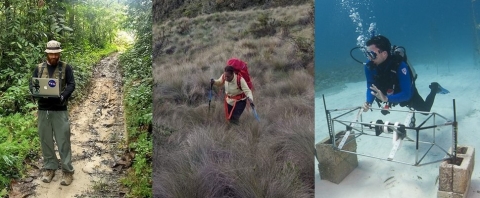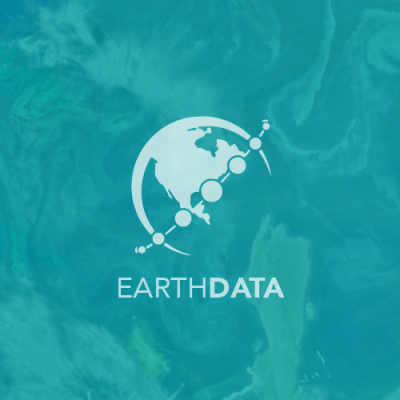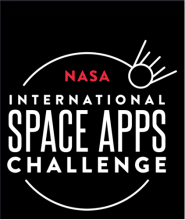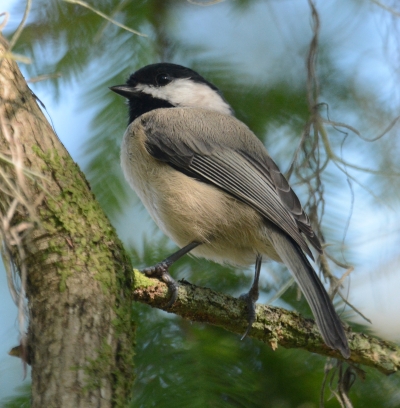The term "biodiversity" is used to describe the abundance and variety of life on Earth. Having a diverse assemblage of plants, animals, and other organisms in a wide range of habitats promotes ecosystem productivity. Thriving, diverse ecosystems help keep processes like nutrient storage and recycling, pollution filtration, and water resource maintenance in balance. In addition, diverse ecosystems trap vast amounts of carbon and are vital sources of medicine.
Over half of the world’s biodiversity has disappeared since 1970, with an estimated 1 million animal and plant species threatened with extinction—a number greater than at any other time in human history. These declines in biodiversity are largely due to human interactions with the environment through activities including large-scale farming, increased use of chemical pesticides and herbicides, the introduction of non-native species through global transport, and urban expansion due to population growth.
NASA Earth observation data are a key component of research into the causes behind changes in biodiversity and the impacts of these changes. The products, publications, and tools below are a sampling of the many NASA resources that can be used to gain an understanding about our planet's breadth of species.
Biological Diversity and Ecological Conservation Data Pathfinder
The Biological Diversity and Ecological Conservation Data Pathfinder is an in-depth resource for NASA datasets that can aid studies into biodiversity, assist in species distribution modeling, and support conservation management. The Data Pathfinder also has links to tools and applications for discovering, visualizing, and working with biodiversity-related resources.
NASA Worldview
The NASA Worldview imagery mapping and visualization application allows users to select data visualization layers that can be used to assess changes in biodiversity and habitat. The Worldview comparison feature enables changes in the environment to be tracked over time, such as changes in land cover type and the growth of urban areas. In addition, amphibian and mammal richness, the human footprint, and other variables can be assessed using imagery layers created from data available through NASA's Socioeconomic Data and Applications Center (SEDAC), which serves as an "information gateway" between the socioeconomic and Earth science data and information domains. Click on the Worldview map below to interactively compare changes in land cover type between 2001 (left side) and 2018 (right side).
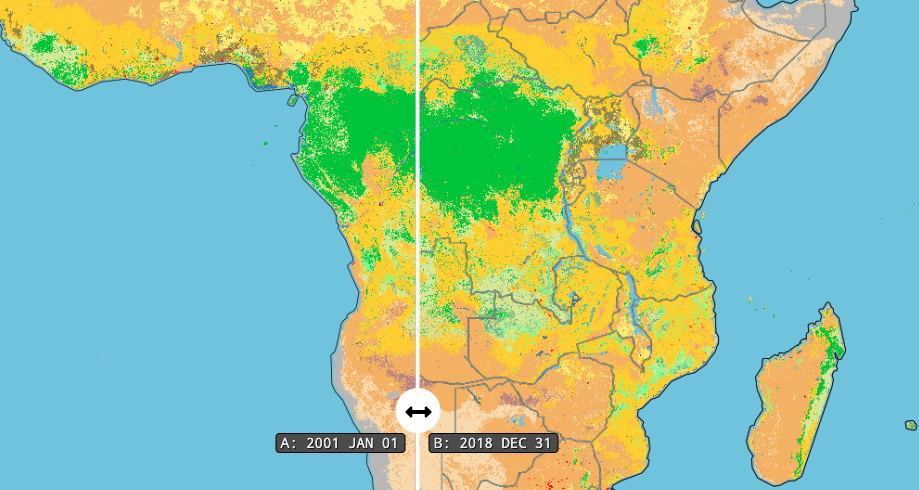
Data User Profiles
Along with NASA Earth science data available through Earthdata Search and NASA's Distributed Active Archive Centers (DAACs), numerous Earthdata articles describe missions collecting biodiversity-related data, highlight new data, and show how these data can be used. Data User Profiles show how individual scientists and researchers are using NASA Earth Observing System Data and Information System (EOSDIS) data to monitor and track changes in ecosystems and biodiversity and how this research is helping communities deal with these changes.
Webinars
NASA Earthdata Webinars span the Earth science disciplines and are designed to help users learn about NASA Earth observing data, services, and tools and show users how to work with these resources.
- Big Things Come in Very Small Packages: SeaHawk — A New Way of Looking at the Ocean
- Getting Started with NASA Global Ecosystems Dynamics Investigation (GEDI) Lidar Data
- NASA Worldview—Explore the Earth from Past to Present with Global Satellite Observations
- ECOSTRESS: NASA's Next-Generation Mission to Measure Evapotranspiration from the ISS
- Learn How to Discover, Access, and Customize Multiple Datasets Using Earthdata Search
- Discover NASA’s Near Real-Time Data using LANCE
- Discover NASA Ocean Color Data, Services, and Tools
Data Recipes and Tutorials
Data recipes are step-by-step instructions for using and working with Earth science data, information, tools, and services. Tutorials cover many different data products across the Earth science disciplines and different data discovery and data access tools, including programming languages and related software.
- Data Recipes at NASA's Goddard Earth Sciences Data and Information Services Center (GES DISC)
- Data Recipes at NASA's Global Hydrometeorology Resource Center DAAC (GHRC DAAC)
- Tutorials at NASA's Level-1 and Atmosphere Archive and Distribution System DAAC (LAADS DAAC)
- Data Recipes at NASA's Land Processes DAAC (LP DAAC)
- Data Recipes at NASA's Oak Ridge National Laboratory DAAC (ORNL DAAC)
Additional Resources
NASA's Biological Diversity and Ecological Conservation programs support basic and applied research as part of NASA’s Earth Science Division (ESD). The Biological Diversity Program is part of the ESD Research and Analysis Program within the Carbon Cycle & Ecosystems Focus Area and supports basic research that advances the understanding of how and why biological diversity is changing. The Ecological Conservation Program is part of the ESD Applied Sciences Program and focuses on the transfer of research to effective decision support for natural resource management. Both the Biological Diversity and Ecological Conservation programs fund competitively solicited research at academic institutions, non-governmental organizations, and the private sector.

